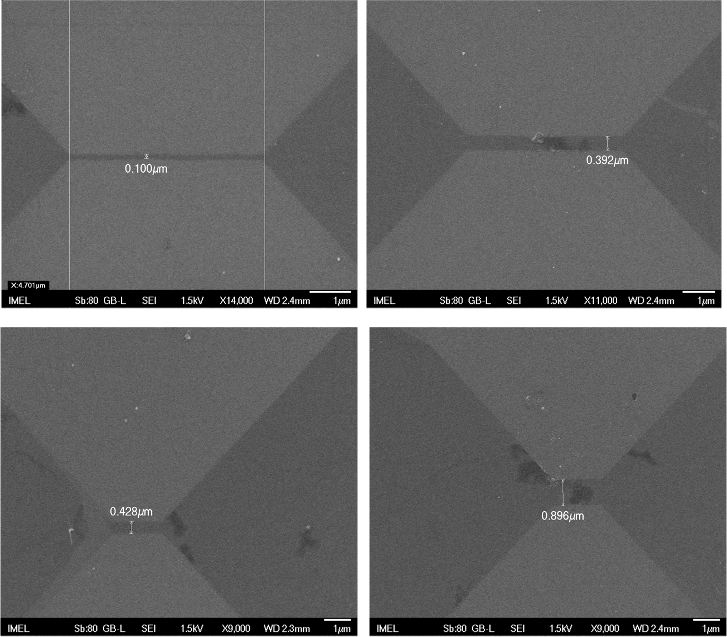Graphene nanoelectronics technology
(Contact person: P. Dimitrakis)
These activities started in 2014 with the motivation of integrating single-layer graphene with RRAMs to modify the metal-insulator interface. Since we have developed a wet graphene transfer methodology, we fabricated the first graphene bottom-gate graphene FET devices. These are suitable for sensor applications.
Graphene nanoribbons (GNRs) are the most important emerging graphene structures for nanoelectronic applications. We have fabricated GNR having width as low as 50nm by e-beam lithography.

In collaboration we Prof.Karafyllidis I., and Prof Sirakoulis G. (ECE-DUTh) we have simulated the effect of defects on the electrical characteristics of butterfly shaped GNRs using the Non-Equilibrium Green’s function (NEGF) method combined with tight-binding Hamiltonians.
Currently we are working on the fabrication of graphene multi-electrode arrays for bio-electronics applications. In collaboration with Dr Georgousi Z. (IBA-NCSR D), we have cultivated neuron cells on graphene demonstrating its superior biocompatibility properties.

Our investigations are focused on the fabrications of (i) GNR FETs for logic applications and (ii) MEA for interaction with neuron cells and other bio-electronics applications.